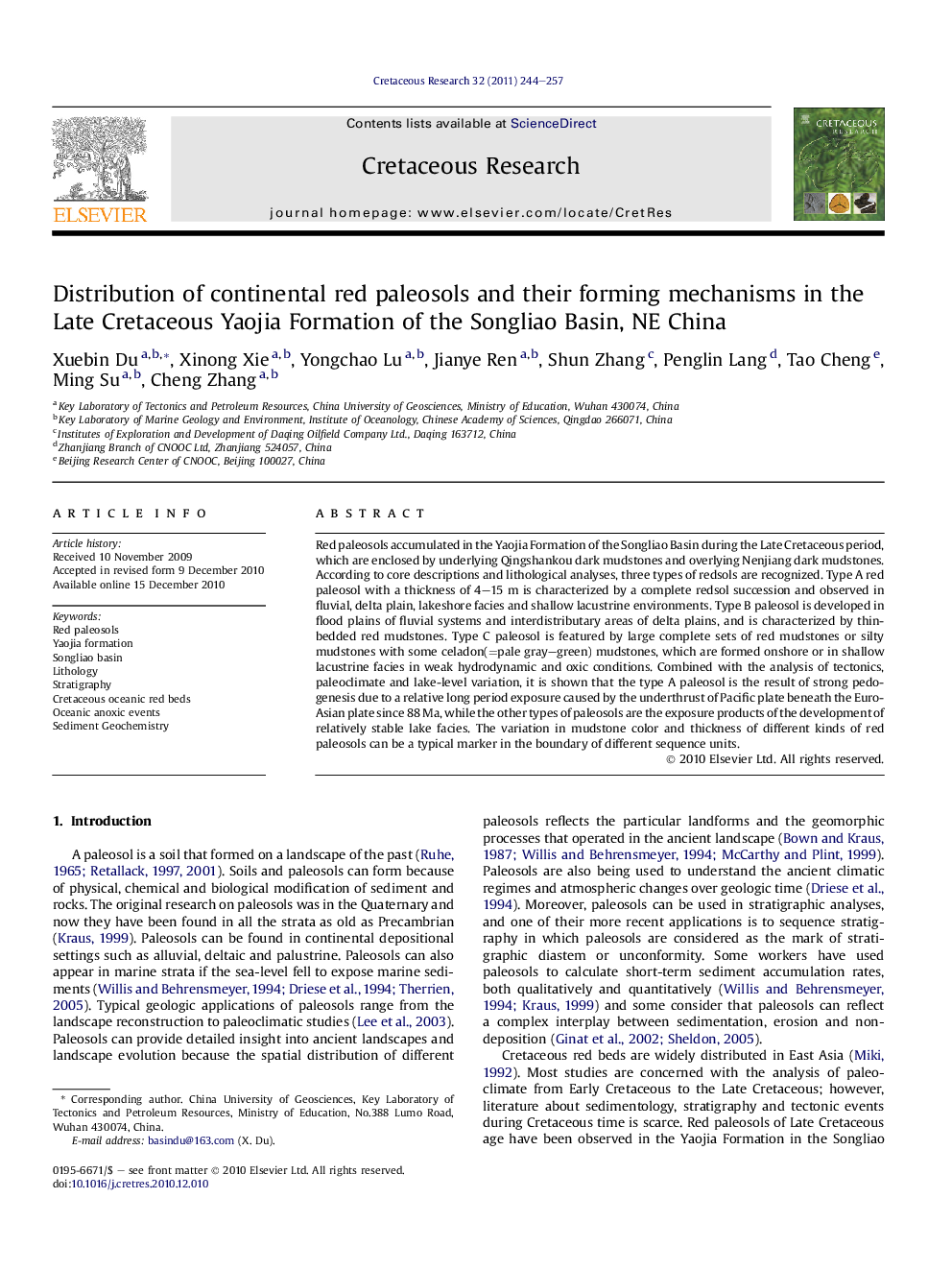| Article ID | Journal | Published Year | Pages | File Type |
|---|---|---|---|---|
| 6448520 | Cretaceous Research | 2011 | 14 Pages |
Red paleosols accumulated in the Yaojia Formation of the Songliao Basin during the Late Cretaceous period, which are enclosed by underlying Qingshankou dark mudstones and overlying Nenjiang dark mudstones. According to core descriptions and lithological analyses, three types of redsols are recognized. Type A red paleosol with a thickness of 4-15Â m is characterized by a complete redsol succession and observed in fluvial, delta plain, lakeshore facies and shallow lacustrine environments. Type B paleosol is developed in flood plains of fluvial systems and interdistributary areas of delta plains, and is characterized by thin-bedded red mudstones. Type C paleosol is featured by large complete sets of red mudstones or silty mudstones with some celadon(=pale gray-green) mudstones, which are formed onshore or in shallow lacustrine facies in weak hydrodynamic and oxic conditions. Combined with the analysis of tectonics, paleoclimate and lake-level variation, it is shown that the type A paleosol is the result of strong pedogenesis due to a relative long period exposure caused by the underthrust of Pacific plate beneath the Euro-Asian plate since 88 Ma, while the other types of paleosols are the exposure products of the development of relatively stable lake facies. The variation in mudstone color and thickness of different kinds of red paleosols can be a typical marker in the boundary of different sequence units.
